Porcellio Hoffmannseggi Isopods For Sale
$79.99 – $299.99
WE HAVE PORCELLIO HOFFMANNSEGGI ISOPODS FOR SALE HERE ARE SOME HIGHLIGHTS:
- Porcellio hoffmannseggi
- Captive Bred
- Mixed Sizes: Babies To Adults
- Adults Grow To About 40mm
- Excellent For Cleaners And Feeders
- Isopods Consume Waste And Decaying Matter To Keep Your Tank Clean
Porcellio hoffmannseggi Isopods
Porcellio hoffmannseggi Isopods, more commonly known as the Titan Isopod, occupies a fascinating niche within the diverse world of isopods. Belonging to the family Porcellionidae and the genus Porcellio, this species distinguishes itself through its notable size and distinctive physical features. Unlike many of its relatives, the Titan Isopod is considerably larger, making it a subject of interest for both entomologists and hobbyists.
The physical characteristics of Porcellio hoffmannseggi Isopods are particularly striking. It possesses a robust, segmented exoskeleton that provides both protection and flexibility. The exoskeleton is often a deep, slate-gray color, which aids in camouflage within its natural habitat. Furthermore, the Titan Isopod has well-developed antennae and compound eyes, which contribute to its sensory capabilities. Its limbs are adapted for both burrowing and navigating through its environment, showcasing the evolutionary adaptability of this species.
In terms of habitat, Porcellio hoffmannseggi Isopods is primarily found in Mediterranean regions, thriving in environments that offer a balance of moisture and organic material. These isopods are often located in leaf litter, under stones, and in decaying wood, where they play a crucial role in the decomposition process. Their geographic distribution is relatively limited to specific climatic zones, but within these areas, they are quite prevalent.
Understanding the basic taxonomy and physical traits of Porcellio hoffmannseggi Isopods provides a foundation for further exploration into its ecological role and behavior. As we delve deeper into the study of this remarkable isopod, it becomes clear why it has garnered the nickname of the Titan Isopod among enthusiasts and researchers alike.
Physical Characteristics and Size
Porcellio hoffmannseggi Isopods, commonly referred to as the ‘Titan Isopod,’ stands out due to its remarkable size and distinctive physical traits. Among the myriad of isopod species, Porcellio hoffmannseggi Isopods is notably larger, a feature that has earned it the nickname ‘Titan Isopod.’ Typically, adult specimens can reach lengths of up to 30 millimeters, making them significantly more substantial than their relatives.
The Titan Isopod exhibits a robust exoskeleton, which provides both protection and structural support. This exoskeleton is composed of overlapping plates that allow for flexibility and mobility while safeguarding the isopod from predation and environmental hazards. The coloration of Porcellio hoffmannseggi Isopods is another defining characteristic, with hues ranging from dark grey to almost black, often with subtle mottling. This coloration aids in camouflage, blending seamlessly with the leaf litter and soil of its natural habitat.
One of the most striking features of Porcellio hoffmannseggi Isopods is its well-developed antennae, which are elongated and segmented, playing a crucial role in sensory perception. These antennae are highly sensitive to chemical and tactile stimuli, helping the isopod navigate its environment and locate food sources. The limbs of Porcellio hoffmannseggi Isopods are also noteworthy; it possesses seven pairs of thoracic legs that facilitate efficient locomotion. These legs are equipped with small claws, enabling the isopod to grip surfaces securely as it moves.
When compared to other isopod species, such as Porcellio scaber or Armadillidium vulgare, Porcellio hoffmannseggi Isopods size and physical attributes are particularly pronounced. While Porcellio scaber typically measures around 12-15 millimeters in length, and Armadillidium vulgare averages about 18 millimeters, the Titan Isopod’s larger dimensions set it apart. The robust exoskeleton, distinctive coloration, and advanced sensory apparatus of Porcellio hoffmannseggi Isopods underscore its unique adaptations and contribute to its status as a fascinating subject of study within the realm of isopod research.
Habitat and Distribution
Porcellio hoffmannseggi Isopods, commonly known as the Titan Isopod, is a terrestrial crustacean that thrives in a variety of habitats. This resilient species is typically found in regions with moderate to high humidity, often favoring environments that offer a combination of moisture and organic matter. These areas include deciduous forests, where leaf litter and decomposing wood provide ample shelter and sustenance.
Geographically, the Titan Isopod is predominantly distributed across Southern Europe and parts of North Africa. It is particularly prevalent in Mediterranean climates, characterized by warm, dry summers and mild, wet winters. This climate is conducive to the growth of the vegetation and detritus that form the primary components of its diet. The natural habitat of Porcellio hoffmannseggi Isopods also extends to coastal regions, where it can often be found under rocks and logs, taking advantage of the damp conditions.
Within its range, the Titan Isopod exhibits some variations in habitat preference. In more arid areas, it tends to seek out microhabitats with higher humidity levels, such as shaded crevices and beneath thick layers of organic debris. In contrast, in wetter regions, it can be found in more exposed areas, though it still prefers locations that offer protection from direct sunlight and extreme weather conditions.
Ecologically, the Titan Isopod plays a significant role in nutrient cycling. By feeding on decaying plant material, it helps break down complex organic compounds, facilitating the return of nutrients to the soil. This process supports the health of the ecosystem by promoting soil fertility and plant growth. The adaptability of Porcellio hoffmannseggi Isopods to various habitats underscores its importance as a decomposer in both forested and coastal ecosystems.
Diet and Feeding Behavior
Porcellio hoffmannseggi Isopods, commonly known as the Titan Isopod, exhibits fascinating dietary habits that make it an essential player in its ecosystem. As a decomposer, it primarily consumes decaying organic matter, including leaf litter, dead wood, and other plant material. This diet not only sustains the isopod but also contributes significantly to nutrient cycling in its habitat, helping to break down and recycle organic materials back into the soil.
The feeding behavior of Porcellio hoffmannseggi Isopods is characterized by its scavenging nature. It uses its highly developed sense of smell to locate food sources, often relying on chemical cues emitted by decaying matter. Once it identifies a suitable food source, the Titan Isopod employs its strong mandibles to break down the material into smaller, ingestible pieces. This process is facilitated by its specialized mouthparts, which are adapted for chewing and grinding tough plant fibers.
Interestingly, the diet of Porcellio hoffmannseggi Isopods can vary depending on its environment and stage of life. In nutrient-rich environments, it may have access to a wider variety of decaying plant matter, while in more arid or barren habitats, it might rely more on detritus and other available organic debris. Juveniles may have different dietary requirements compared to adults, often consuming more nutrient-dense food to support their growth and development.
This dietary flexibility reflects the adaptability of Porcellio hoffmannseggi Isopods to diverse environments. Its role as a decomposer is crucial, as it helps to maintain the balance of ecosystems by breaking down organic material and returning essential nutrients to the soil. Understanding the diet and feeding behavior of the Titan Isopod not only highlights its ecological importance but also offers insights into the complex interactions within its habitat.
Reproductive Cycle and Lifespan
The reproductive cycle of Porcellio hoffmannseggi Isopods, commonly known as the Titan Isopod, is a fascinating process marked by distinct stages and behaviors. Mating behavior in these isopods involves a ritualistic approach where the male courts the female through a series of antennal and body movements. This courtship can last several hours before mating occurs. Once successful copulation has taken place, the female undergoes a gestation period lasting approximately two to three weeks, during which the fertilized eggs are carried in a specialized brood pouch known as the marsupium.
The development of offspring begins within the marsupium, where the eggs hatch into mancae, an early stage that resembles miniature adults but lacks fully developed appendages. These mancae remain in the marsupium for protection and nourishment until they are sufficiently developed to survive independently, typically taking another two weeks. Upon leaving the marsupium, the juvenile Titan Isopods undergo several molts – a process where they shed their exoskeleton to grow – before reaching full adulthood. Each molt marks a critical phase in their development, with significant morphological changes that prepare them for various life stages.
Porcellio hoffmannseggi Isopods typically reaches maturity within six months to a year, depending on environmental conditions such as temperature and availability of food. The lifespan of the Titan Isopod can vary significantly, with individuals living from two to four years in optimal conditions. Several factors influence longevity, including environmental stability, predation pressures, and access to nutrition. These isopods thrive in moist, decaying organic matter, which provides both habitat and food, thereby playing a crucial role in their survival and lifespan.
Understanding the reproductive cycle and lifespan of Porcellio hoffmannseggi Isopods not only sheds light on the biology of this intriguing species but also highlights the importance of maintaining its natural habitat for conservation efforts. The Titan Isopod’s lifecycle, from egg to adult, underscores the delicate balance required for its continued existence in the ecosystem.
Role in the Ecosystem
Porcellio hoffmannseggi Isopods, commonly known as the Titan Isopod, plays an integral role in the ecosystem, particularly as a decomposer. As a detritivore, it primarily feeds on decaying organic matter, including dead plants and animals. This feeding behavior is crucial as it helps break down and recycle nutrients back into the soil, thus maintaining soil health and fertility. By consuming decomposing material, Porcellio hoffmannseggi Isopods aids in the process of nutrient cycling, ensuring that essential elements such as carbon, nitrogen, and phosphorus are made available to plants and other organisms within the ecosystem.
The Titan Isopod’s activities improve soil structure by promoting the formation of humus, which enhances soil aeration and water retention. This, in turn, creates a more conducive environment for plant roots to grow and for microorganisms to thrive. The presence of Porcellio hoffmannseggi Isopods in the soil also helps control the population of fungi and bacteria, as it preys on certain microbial species, thereby maintaining a balanced microbial community.
In addition to its role in nutrient cycling, Porcellio hoffmannseggi Isopods engages in symbiotic relationships with various organisms. For instance, it often coexists with mycorrhizal fungi, which form mutualistic relationships with plant roots. The isopod’s decomposing activities release nutrients that benefit these fungi, while the fungi, in turn, help plants absorb water and nutrients more efficiently. This symbiosis enhances plant growth and contributes to the overall health of the ecosystem.
Furthermore, the Titan Isopod serves as a food source for various predators, including birds, amphibians, and small mammals. Its presence in the food web underscores its impact on the broader ecosystem, as it supports the survival and reproduction of these predators. In essence, Porcellio hoffmannseggi Isopods role as a decomposer and its interactions with other organisms underscore its importance in maintaining ecological balance and promoting biodiversity.
Conservation Status and Threats
The conservation status of Porcellio hoffmannseggi Isopods, commonly known as the Titan Isopod, is a subject of growing concern among scientists and conservationists. As of the latest assessments, this species is not officially listed as endangered or vulnerable by major conservation organizations such as the International Union for Conservation of Nature (IUCN). However, this does not mean that the Titan Isopod is free from threats or that its populations are stable.
One of the primary threats facing Porcellio hoffmannseggi Isopods is habitat destruction. The natural habitats of these isopods, which include moist environments such as leaf litter and under stones in forested areas, are increasingly being encroached upon by urban development and agricultural activities. Deforestation and land conversion for farming lead to significant habitat loss, which in turn affects the population dynamics of the species.
Pollution also poses a significant risk to the Titan Isopod. Contaminants from industrial activities and agricultural runoff can degrade the quality of their habitats, making them inhospitable for survival. Chemical pollutants can alter the microhabitats and the availability of food resources, thereby impacting the overall health and reproductive success of the species.
Climate change is another looming threat that could potentially alter the habitats of Porcellio hoffmannseggi Isopods. Changes in temperature and humidity can disrupt the delicate balance of their ecosystems. Extreme weather events and shifts in climate patterns could lead to habitat fragmentation and loss, further putting pressure on the already vulnerable populations of these isopods.
In response to these threats, several conservation efforts are being undertaken. Habitat preservation is a key focus, with initiatives aimed at protecting and restoring natural environments where the Titan Isopod thrives. Environmental regulations to control pollution and sustainable land-use practices are also being advocated to mitigate the adverse effects on their populations. Research and monitoring programs are crucial to understanding the species better and devising effective conservation strategies.
Captive Care and Keeping as Pets
Porcellio hoffmannseggi Isopods, also known as the Titan Isopod, has garnered notable attention within the pet trade and hobbyist communities due to its striking appearance and intriguing behaviors. These isopods can make fascinating pets, provided their specific care requirements are met. Ensuring the well-being of Titan Isopods in captivity begins with an appropriate habitat setup. A terrarium with a capacity of at least 10 gallons is recommended for housing a small colony. The substrate should be a mix of coconut fiber, leaf litter, and decomposing wood to mimic their natural environment. This substrate not only provides a suitable living surface but also aids in maintaining necessary humidity levels.
Temperature and humidity are crucial factors in the successful care of Porcellio hoffmannseggi Isopods. The ideal temperature range is between 70-80°F (21-27°C), with humidity levels maintained at approximately 70-80%. Regular misting and the inclusion of moisture-retaining elements like sphagnum moss can help achieve these conditions. Adequate ventilation is also vital to prevent mold growth and to ensure a healthy environment for the isopods.
When it comes to diet, Titan Isopods are detritivores, meaning they primarily consume decomposing organic matter. A balanced diet can include a combination of leaf litter, decayed wood, fruits, and vegetables. Commercial isopod food can also be provided to ensure they receive all necessary nutrients. Feeding should be monitored to avoid overfeeding and to keep the enclosure clean.
The ethical considerations of keeping Porcellio hoffmannseggi Isopods as pets cannot be overstated. Prospective keepers should be aware of their responsibility to provide a stable and enriching environment. Hobbyists should source their isopods from reputable breeders to avoid contributing to the depletion of wild populations. Additionally, regular maintenance of the enclosure, including substrate replacement and cleaning, is essential to prevent health issues and ensure longevity.
With the right care and attention, Porcellio hoffmannseggi Isopods can thrive in captivity, offering enthusiasts a unique and rewarding pet-keeping experience. Following these guidelines will help ensure that these impressive isopods remain healthy and active in their captive habitats.
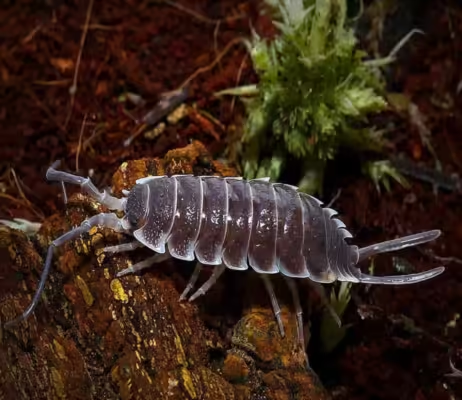
| Option | 10 ct., 25 ct., 50 ct. |
|---|
Be the first to review “Porcellio Hoffmannseggi Isopods For Sale” Cancel reply
Related products
Isopods
Isopods
Isopods
Isopods



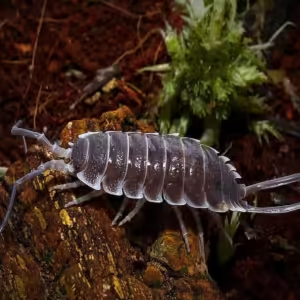

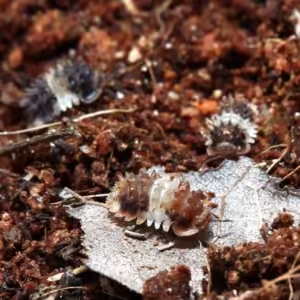


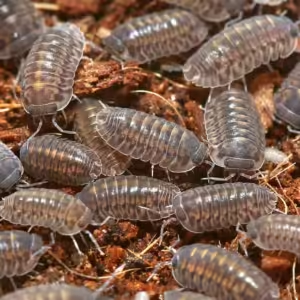

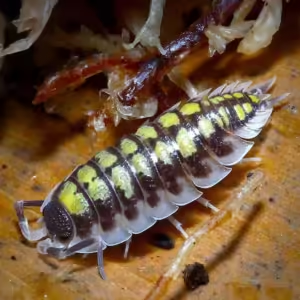

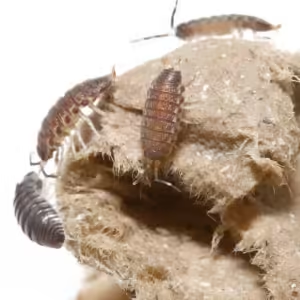

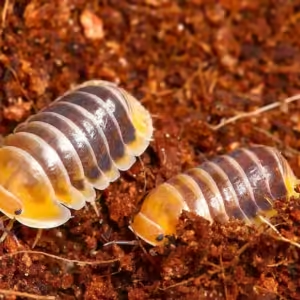
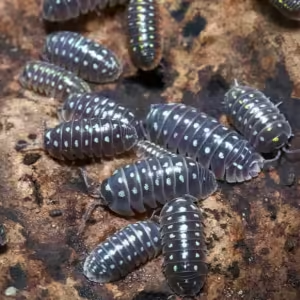
Reviews
There are no reviews yet.